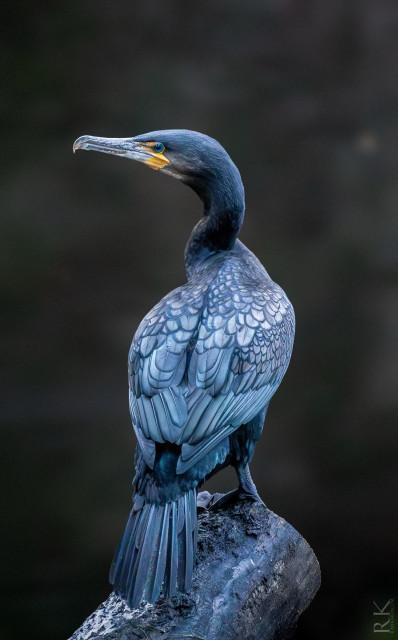For the next week, I will be posting pictures of cormorants – one per day – in this thread.
All of these photos are local to me, captured during my dog walks.
I may include facts about the species, the story behind the picture, or a quote from Carl Sagan.
Follow #CormorantWeek if you’re interested, and feel free to mute if you’re not.
More info in ALT.
@RSPB
#WildlifePhotography #Photography #Cormorant #Birds #BirdPhotography
🧵1/7
This entry was edited (3 weeks ago)


Raff Karva
in reply to Raff Karva • • •Just like in my previous post, meet Leila (Arabic for ‘night’), who often - solitarily - hangs out where I take my dog for a swim.
Female and male cormorants look almost identical. In breeding pairs, males tend to have sturdier heads and bodies. Females often choose larger males (assortative pairing), but outside the nesting season, it can be hard to tell the genders apart.
Leila is thus in superposition, both X and Y until observed.
#CormorantWeek 🧵 2/7
#Wildlife #Birds #WildlifePhotography
Raff Karva
in reply to Raff Karva • • •Since you're on Mastodon you probably know this: cormorants have non-waterproof feathers that absorb water, reducing buoyancy and allowing them to dive deeper and longer.
However, this also means they carry heavy plumage during flight, leading to their distinctive behavior of air drying their wings.
#CormorantWeek 🧵 3/7
#Wildlife #WildlifePhotography #Photography
Raff Karva
in reply to Raff Karva • • •“Cormorant” is a contraction probably derived from Latin corvus marinus, "sea raven".
"Sea raven" was the usual term for cormorants in Germanic languages until after the Middle Ages.
The belief that cormorants were related to ravens lasted at least to the 16th century.
In Northern European traditions spirits of those lost at sea come to visit their loved ones disguised as cormorants.
#CormorantWeek 🧵 4/7
#Wildlife #WildlifePhotography #Birds #BirdPhotography